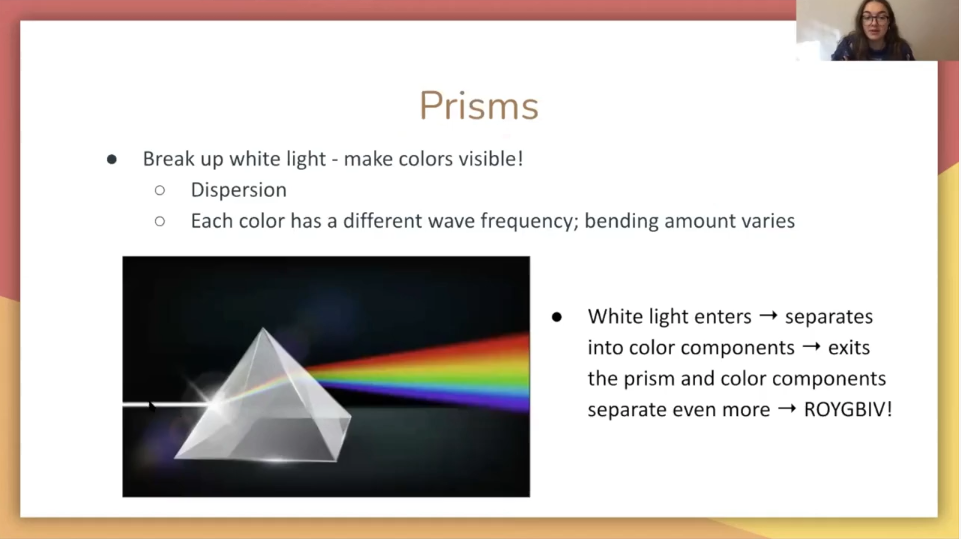Three students volunteered to create labs in optical physics for middle and high schoolers
January 2021 – Three students teamed up to provide virtual educational resources for New Jersey middle and high school students as part of their volunteer service as Drew University Civic and Action Scholars.
Enlarge

Hannah Winter C’23 was searching for a virtual internship last semester when Amy Koritz, professor of English and director of the Center for Civic Engagement, and Amy Sugerman, assistant director of the Center for Civic Engagement, reached out about an opportunity with Students 2 Science, an organization focused on building future leaders in STEM throughout the state of New Jersey.
“As I read about Students 2 Science, I came to love their mission,” said Winter, a Civic Scholar, psychology major, and triple minor in neuroscience, public health, and biology.
Koritz and Sugerman asked if Winter would be willing to mentor two first-year Action Scholars, Amelia Abruscato C’24 and Ange Wunderle C’24, who had also signed on to work with Students 2 Science that semester.
“I had struggled to find in-person community service opportunities, and I got a little nervous,” said Abruscato.
After Koritz and Sugerman stepped in to provide a list of virtual volunteer options, “I was just sucked into the Students 2 Science opportunity just by reading their mission statement,” said Abruscato.
The three students quickly found a common interest in optical physics, with varying interests within the subject, and decided to create three “mini labs” for middle and high school students focusing on each of their particular favorite fields.
Each student created a PowerPoint presentation on their topic and filmed themselves teaching it in a Zoom lesson format. They also created supplemental materials like quizzes and terminology sheets to be used along with the mini lab lessons.
Enlarge

“My individual project was about medical diagnostics, given my interest in medicine,” said Winter, who plans to pursue a career in the medical field.
“I wanted to find a way to relate medicine to optical physics, so my lab teaches students about varying diagnostic techniques like MRI, X-ray, and PET scans, all of which utilize optical physics.”
Abruscato focused her mini lab on the phenomena of diffraction, and Wunderle tackled the optical physics of rainbows.
Given remote learning practices in effect during the COVID-19 pandemic, the presentation video was made accessible to Students 2 Science students throughout the state via an online link, and will be featured later this year in the organization’s resource center.
“I truly enjoyed being involved in this program,” said Wunderle. “It allowed all of us to explore the STEM field and present our knowledge to others.”


